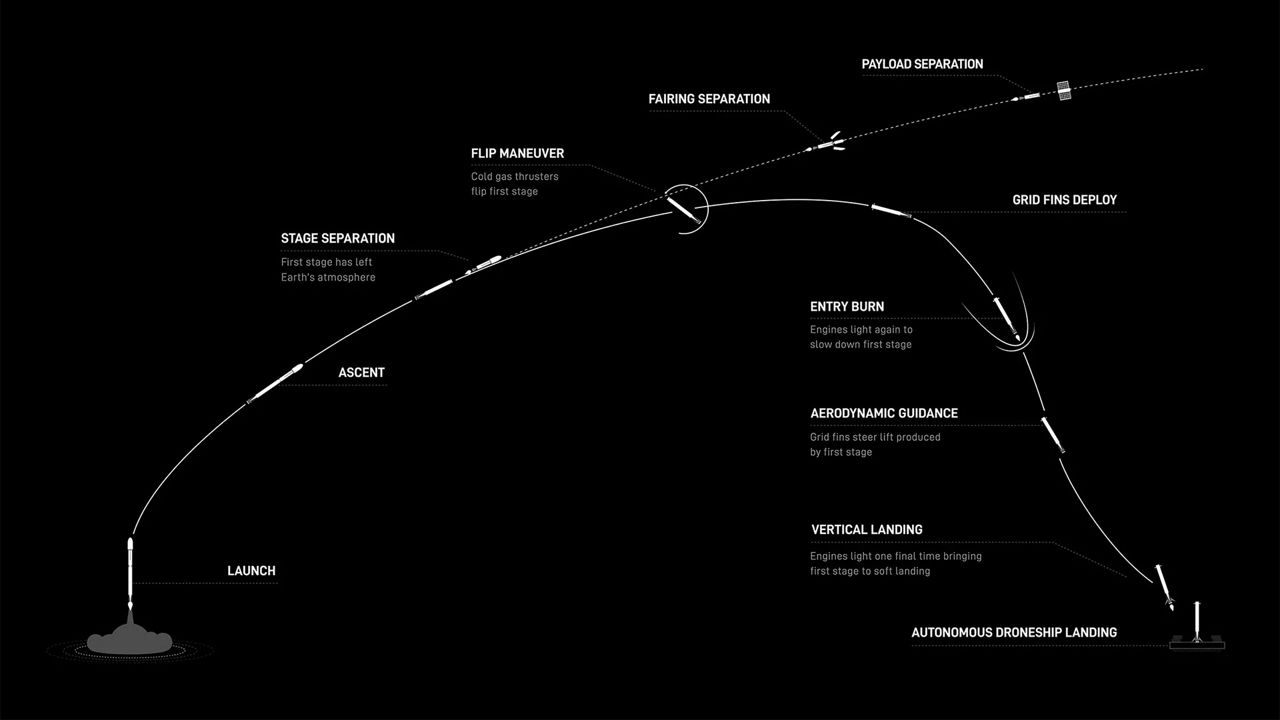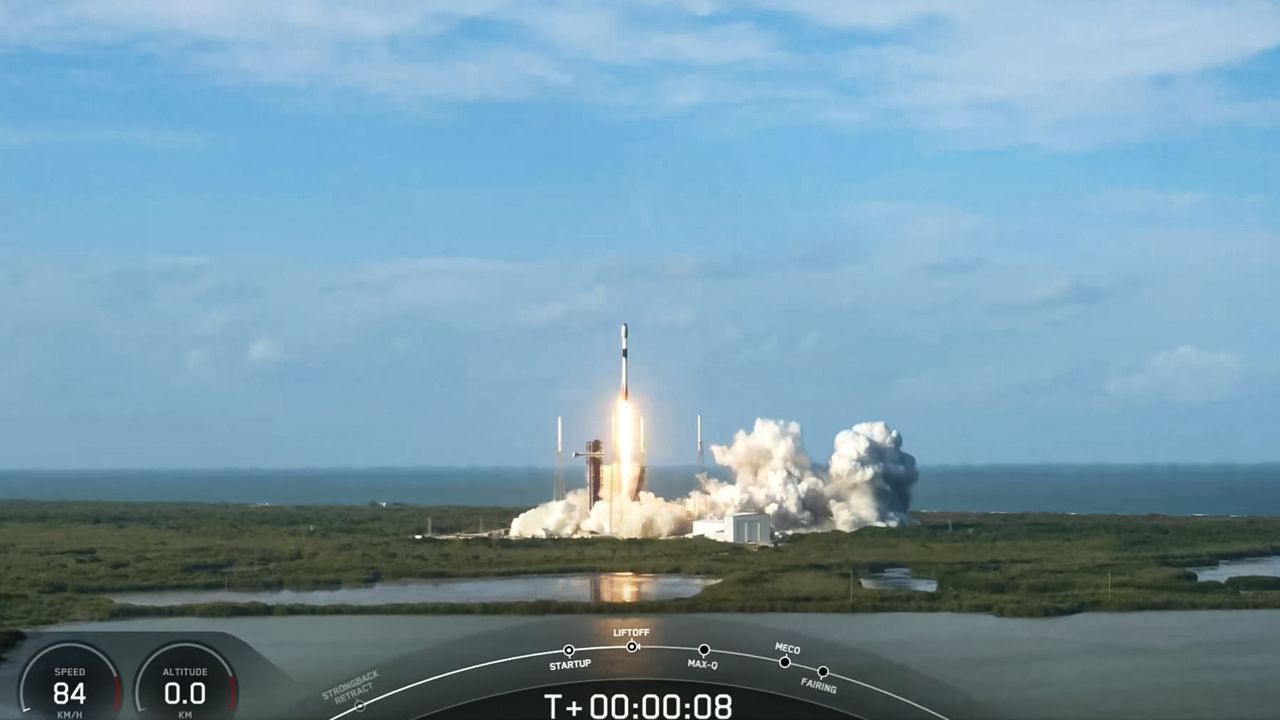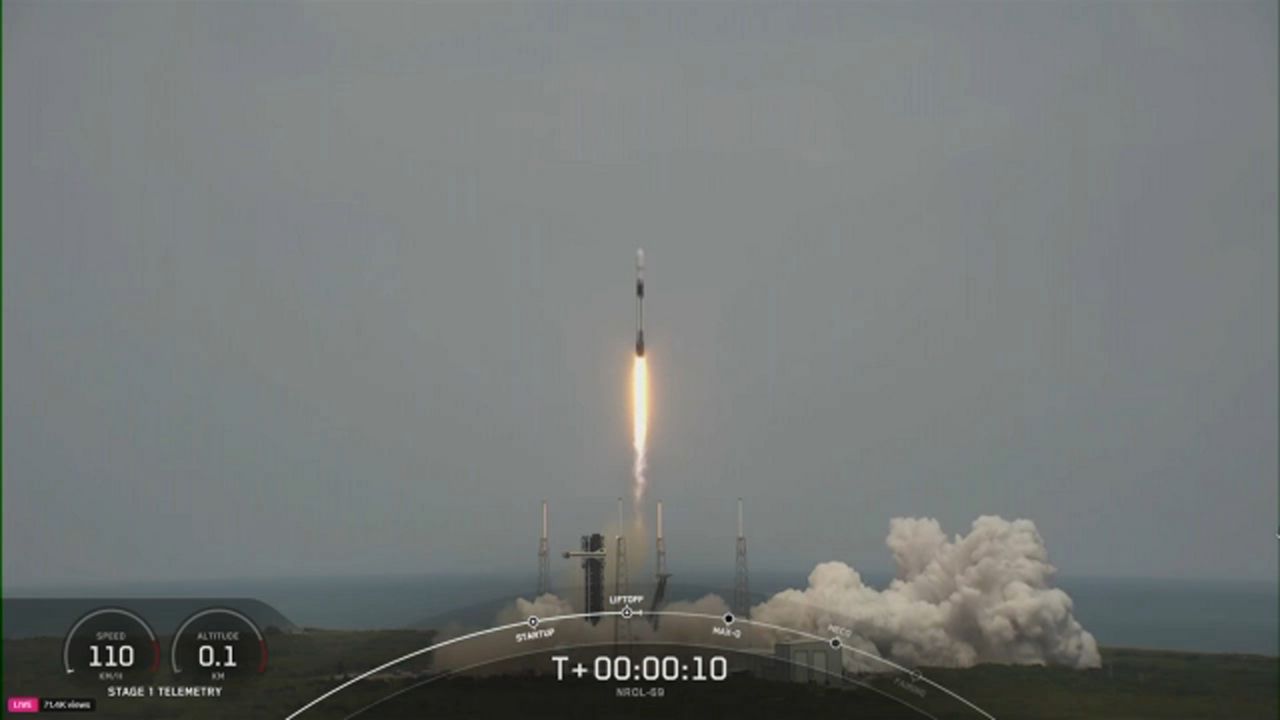CAPE CANAVERAL SPACE FORCE STATION — SpaceX launched more than 20 Starlink satellites early Sunday evening, a not-so-rare sight in the Sunshine State skies.
What You Need To Know
- More than 20 Starlink satellites were launched
- It will take off from Space Launch Complex 40 at Cape Canaveral Space Force Station
Liftoff and ascent of Falcon 9 pic.twitter.com/bUyObEgTXf
— SpaceX (@SpaceX) April 28, 2024
The Falcon 9 rocket took off with the Starlink 6-54 mission from Space Launch Complex 40 at Cape Canaveral Space Force Station, stated SpaceX.
The launch window opened at 6:08 p.m. ET. It was originally set to start at 5:50 p.m. ET and it close four hours later. SpaceX did not state why it delayed the launch.
The 45th Weather Squadron gave an 80% chance of good liftoff conditions, with the only concerns being the thick cloud layers and cumulus cloud rules.
If there was a scrub, the next launch attempt would have been Monday at 5:25 p.m. ET.
Going up
This was lucky (unlucky?) mission 13 for the Falcon 9's first-stage booster B1076. Before this baker’s dozen launch, the booster had 12 missions to its name:
- CRS-26
- OneWeb Flight 16
- Intelsat IS-40e
- Starlink Group 6-1 mission
- Starlink Group 6-3 mission
- Starlink Group 6-6 mission
- Starlink Group 6-14 mission
- Starlink Group 6-21 mission
- SES O3B-mPOWER
- Ovzon-3
- Starlink Group 6-40 mission
- Eutelsat 36D
After the stage separation, the first-stage rocket landed on the droneship Just Read the Instructions that was in the Atlantic Ocean.
Landing burn and touchdown on the Just Read the Instructions droneship pic.twitter.com/qbVzhByVZZ
— SpaceX (@SpaceX) April 28, 2024

About the mission
The 23 telecommunications satellites from the SpaceX-company Starlink will be heading to low-Earth orbit to join the thousands already there.
Dr. Jonathan McDowell, of Harvard-Smithsonian Center for Astrophysics, has been recording Starlink satellites.
Before this launch, McDowell documented the following:
- 5,874 are in orbit
- 5,214 are in operational orbit








